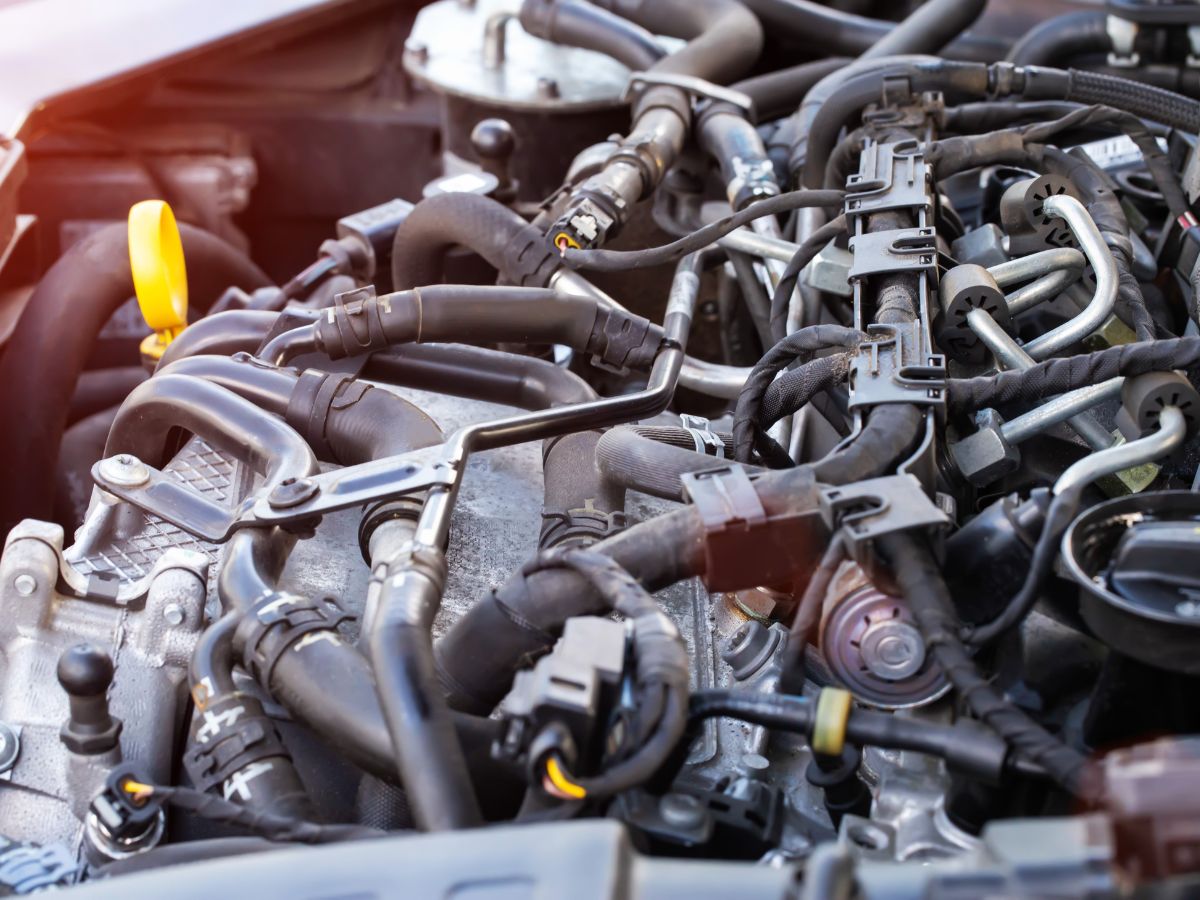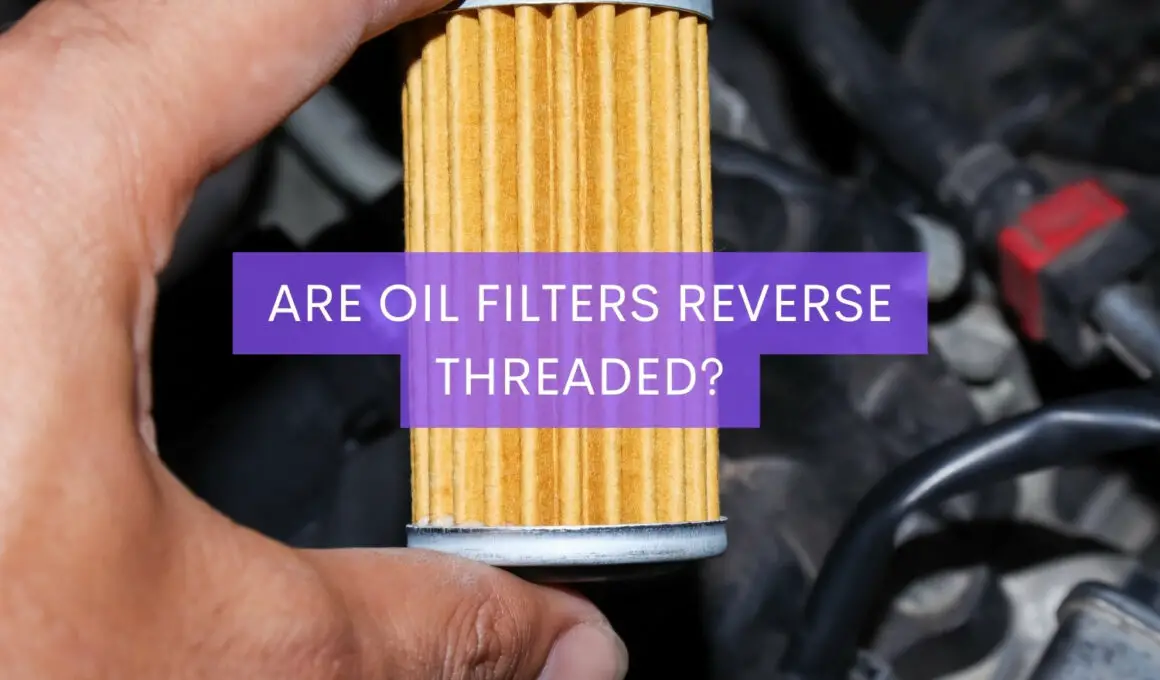In This Article Show
As a seasoned mechanic with over 15 years of hands-on experience, I’ve understood that oil filters, though small and seemingly insignificant, are integral components in a vehicle’s maintenance.
Their role is often overlooked, but without them, your engine’s lifespan could drastically reduce.
In my long career, both working in the garage and writing about my experiences, I’ve answered many queries, and one of the more common ones is: are oil filters reverse threaded? This seemingly straightforward question is more complex than it appears, and requires a nuanced understanding of oil filter design and functionality.
In this article, I’ll comprehensively answer this question, drawing on my extensive experience as a mechanic and writer. I’ll explain what oil filters are, the concept of thread direction, the reason behind oil filter thread direction, and a step-by-step guide on correctly installing and removing oil filters.
The Basics of Oil Filters
Before we delve into the question at hand, it’s important to understand what an oil filter is and its function in a vehicle. An oil filter, as the name suggests, is a filter designed to remove contaminants from engine oil, transmission oil, lubricating oil, or hydraulic oil.
Oil is the lifeblood of your car’s engine. It lubricates and cools the moving parts, preventing wear and tear. Over time, however, this oil gets contaminated with dust, metal scrapings, and engine wear particles. This is where oil filters come into play.
They filter out these contaminants, ensuring clean, efficient lubrication for the moving parts of your engine.
An oil filter typically comprises components, including a base plate, filter medium (or the element), and a bypass valve. The base plate allows the oil to flow in and out of the filter, the filter medium does the actual filtering, and the bypass valve allows oil to bypass the filter if it gets clogged.
A well-functioning oil filter can significantly extend the life of your vehicle’s engine, ensuring it performs at its best for years to come.
What is Thread Direction?
Thread direction is a fundamental concept in mechanical engineering that refers to the direction in which a thread, a helical structure used for fastening or sealing, follows along a bolt, screw, or, in our case, an oil filter. It’s how you turn the threaded object to tighten or loosen it.
There are two types of thread directions: right-hand (standard) and left-hand (reverse). The majority of screws, bolts, and nuts follow the right-hand rule, which is the direction you’re likely most familiar with: “righty-tighty, lefty-loosey”. This means you turn the object to the right (clockwise) to tighten and to the left (counter-clockwise) to loosen.
On the other hand, a left-hand or reverse thread operates counter to the standard.
A reverse threaded screw, for instance, would tighten when turned to the left and loosen when turned to the right. These are less common but are used in specific applications where a right-hand thread may be problematic.

Are Oil Filters Reverse Threaded?
The burning question many have asked: are oil filters reverse threaded? In my 15 years of experience both as a mechanic and a writer, I can say with certainty that the majority of oil filters are not reverse-threaded. They follow the standard right-hand thread direction: you turn to the right or clockwise to tighten and to the left or counter-clockwise to loosen.
There might be exceptions in certain unique cases or specific vehicle models, but these are outliers, not the norm. Suppose you come across an oil filter that appears to be reverse-threaded.
In that case, it’s crucial to double-check the specifications in your vehicle’s manual or with the filter’s manufacturer to avoid potential damage during installation or removal.
It’s understandable why there might be confusion around this topic. Other components in vehicles, like certain types of bolts or screws, can indeed have a left-hand thread. But when it comes to oil filters, you can generally count on them following the standard right-hand thread rule.
The Logic Behind Oil Filter Thread Direction
Now that we’ve established that oil filters typically use a standard, right-hand thread, you might wonder why this is the case? Why aren’t they reverse-threaded?
The answer lies in understanding the practicality and the nature of how oil filters operate. With the standard thread direction, the action of the engine doesn’t tend to loosen the oil filter.
The rotation of most engines and the direction of the oil being pumped into the filter combine to tighten it, not loosen it. Therefore, having a standard right-hand thread makes practical and functional sense.
As I have found throughout my experience, most designs are purposeful when dealing with mechanics and vehicle components, based on practical needs and the principle of efficient functionality. It is for this very reason that you’ll find most if not all, oil filters using standard right-hand threads.
Of course, as with everything in life, there are exceptions to this rule. As previously mentioned, some specific vehicle models or unique situations may call for a reverse-threaded oil filter. However, in the grand scheme of automotive design and mechanics, these instances are far and few between.
How to Properly Install and Remove Oil Filters
Understanding the proper installation and removal of oil filters is crucial, both for maintaining your engine’s health and preserving the integrity of the oil filter itself.
Installation:
- Preparation: Before you begin, ensure you have the correct oil filter for your specific vehicle model. You can usually find this information in your vehicle’s manual.
- Lubrication: Next, apply a small amount of clean engine oil to the gasket on the top of the new oil filter. This will help to create a better seal and make it easier to remove the filter when it’s time to change it again.
- Installation: Thread the oil filter onto the engine by turning it to the right or clockwise (remember, righty-tighty). It’s important only to install the oil filter hand-tight. Over-tightening with a tool can damage the filter’s seal, leading to leaks.
Removal:
- Preparation: Before you begin, make sure the engine is cool to avoid burns from hot oil. Also, have an oil drain pan ready to catch any oil that drips out when you remove the filter.
- Removal: To remove the oil filter, turn it to the left or counter-clockwise (lefty-loosey). If it’s too tight to remove by hand, you might need to use an oil filter wrench. Be careful not to damage the connection on the engine where the filter screws on.
Throughout these processes, remember that the key to preventing cross-threading or over-tightening is to always start by threading the oil filter by hand.
Only use a tool if absolutely necessary and, even then, be gentle. If you follow these steps carefully, your oil filter changes should go smoothly, helping to extend the life of your vehicle’s engine.
Frequently Asked Questions
If I over-tighten my oil filter, will it become reverse-threaded?
No, over-tightening an oil filter will not change its thread direction. However, it can damage the filter and potentially lead to leaks. Remember to always hand-tighten your oil filter and use a tool only if absolutely necessary.
Are there vehicles that use reverse-threaded oil filters?
While most vehicles use oil filters with a standard right-hand thread, there may be exceptions. Some older models or specific vehicle types could potentially have reverse-threaded oil filters. Always check your vehicle’s manual or consult the manufacturer to be certain.
How do I know if my oil filter is cross-threaded?
A cross-threaded oil filter won’t screw on easily, and you might notice it’s tilted or not sitting flush. If you encounter resistance while installing the filter, unscrew it and start again. Forcing it could damage the threads on the filter and the engine.
Why do other parts in my vehicle have reverse threads?
Certain parts in a vehicle may have reverse threads to prevent them from loosening due to the direction of the force or movement they experience. This is particularly common in parts that rotate or experience regular directional forces.
Can I replace my oil filter without changing my oil?
Generally, it’s best to replace your oil filter whenever you change your oil. The filter captures contaminants in the oil, and an old filter can become clogged and ineffective. Replacing both at the same time ensures your engine runs smoothly and efficiently.
Wrapping it up
To sum up, while there are exceptions in certain specific cases, the majority of oil filters are not reverse threaded.
They follow the standard right-hand thread rule: righty-tighty, lefty-loosey. This design choice is largely due to the practical considerations of how an engine operates and how oil filters function within that system.
Remember, proper installation and removal of oil filters are essential for maintaining the longevity of your vehicle’s engine. Always double-check your vehicle’s manual specifications or consult with the filter’s manufacturer to ensure correct procedures.











